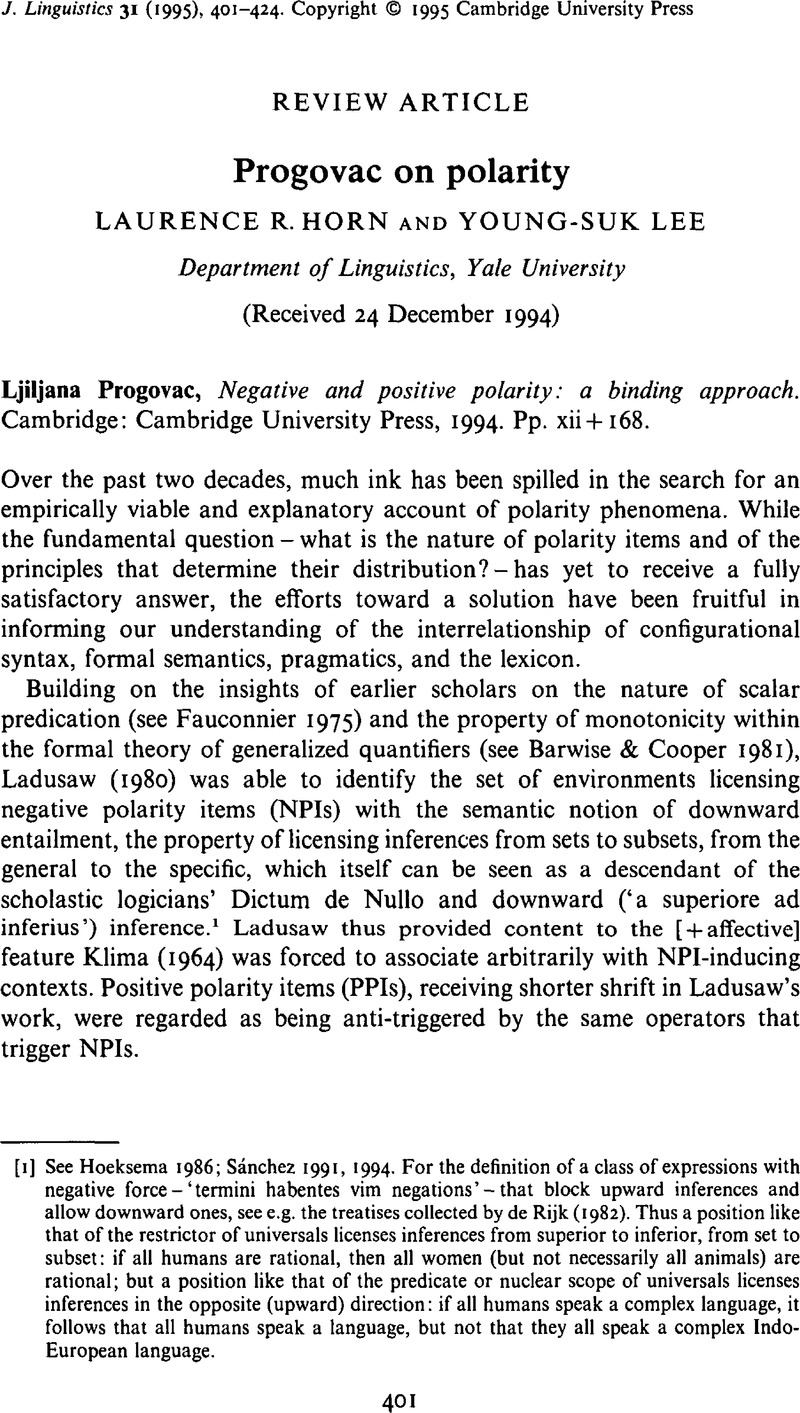Crossref Citations
This article has been cited by the following publications. This list is generated based on data provided by Crossref.
Han, Chung-hye
2002.
Interpreting interrogatives as rhetorical questions.
Lingua,
Vol. 112,
Issue. 3,
p.
201.
Jayez, Jacques
and
Tovena, Lucia M.
2005.
Free Choiceness and Non-Individuation.
Linguistics and Philosophy,
Vol. 28,
Issue. 1,
p.
1.
OGAWA, YOSHIKI
2008.
THE DATIVE ALTERNATION AS A-MOVEMENT OUT OF A SMALL CLAUSE CP.
ENGLISH LINGUISTICS,
Vol. 25,
Issue. 1,
p.
93.



